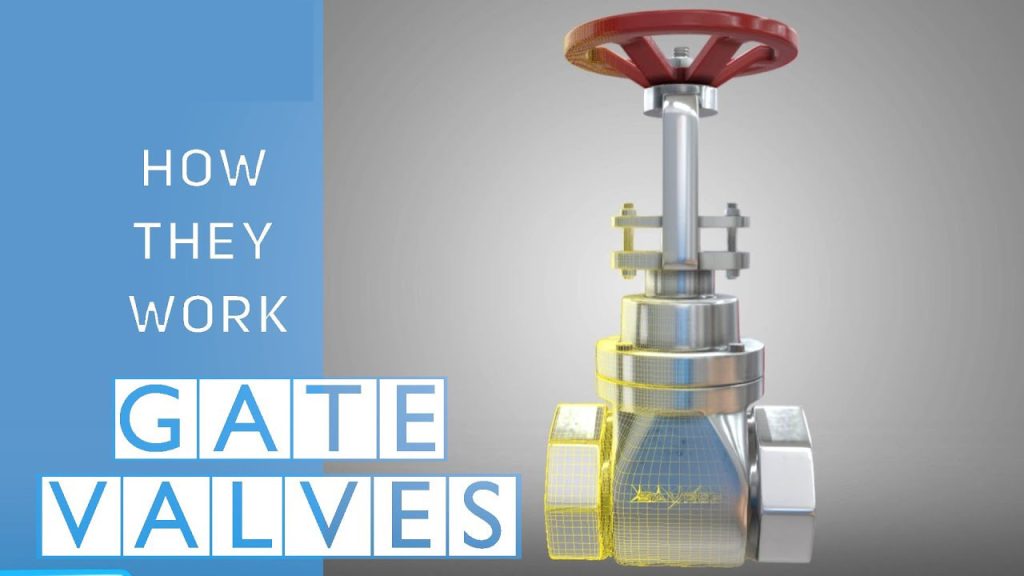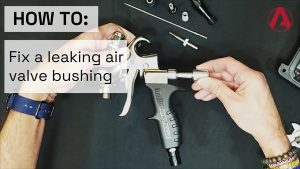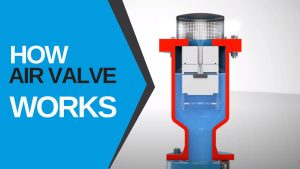A gate valve is an essential fluid control component used extensively in industrial piping and process systems. But how exactly does this ubiquitous valve work? In this comprehensive guide, we’ll cover gate valve basics, components, operation principles and applications to help you better understand these versatile industrial valves.

What is a Gate Valve and What are its Main Parts?
A gate valve is a linear motion valve that utilizes a flat sliding gate and seats to control fluid flow. When open, it provides an unrestricted, full-bore flow passage. Gate valves are mainly used as an on-off valve and should not be used for throttling purposes.
The key parts of a gate valve are:
- Valve Body: Houses internal components and connects the valve to pipe sections. Usually made of cast steel or ductile iron.
- Gate: The flat closure element that slides into the flow stream to shut off flow. Typically made of stainless steel or alloy material.
- Seat: Gate valve seat seals against the valve gate to achieve shutoff. Seats are replaceable and commonly made of resilient elastomer material.
- Stem: Connects the valve gate to the actuator and controls gate movement. Can be rising or non-rising design.
- Bonnet: Covers the valve body opening and protects internal components.
How Does a Gate Valve Work? Operational Fundamentals
The operating principle of gate valves is straightforward:
To open the valve, the handwheel or actuator is operated to lift up the gate assembly off the seat. This provides a full-bore, straight-through flow path with minimal flow restriction or pressure loss.
To close the valve, the gate is lowered into the flow stream until it seals firmly against the seat, blocking flow through the valve. Most gate valves are designed to close with a clockwise handwheel rotation.
Gate valves achieve tight shutoff through the mating of seal surfaces on the gate and seat when the valve is fully closed. The area contact and linear motion enable gate valves to effectively seal bidirectional pressure.
Why Use Gate Valves? Benefits and Applications
There are several key reasons why gate valves are one of the most widely used valve types:
- Tight Shutoff Ability: Gate valves provide bi-directional bubble-tight shutoff, making them suitable for applications requiring positive isolation. This allows gate valves to effectively seal against backpressure buildup.
- Low Pressure Drop: When fully open, gate valves offer straight-through, non-restricted flow, resulting in very low pressure drops. This makes them suitable for applications where pressure loss must be minimized.
- Full-bore Flow: Gate valves are designed as full-port valves. This enables free passage of process flow and also allows easy passage of cleaning pigs for pipe cleaning operations.
Common applications where gate valves are used include:
- Isolation service in steam, gas, water and chemical lines
- On/off control applications
- Liquid transfer lines
- Cooling water feed systems
Gate valves should not be used for throttling applications due to flow and vibration damages that can occur. Where flow control is required, globe or control valves are better suited.
Advancements in Gate Valve Technology
In recent years, key improvements have enhanced gate valve performance and extended service life:
- Resilient seated gate valves provide tighter shutoff and longer seat life compared to older metal seated designs.
- Expanding gate valves utilize wedge expansion against inclined seats, enabling high strength sealing across a wide temperature range.
- New high alloy gate valve designs with Inconel overlays withstand severe service applications involving extreme corrosion and wear.
Understanding how gate valves function and their applications allows proper valve selection ensuring safety, reliability, and functionality for industrial piping systems.
FAQs About Gate Valve Operation
How does a gate valve work to control flow? Gate valves operate by lifting or lowering a flat gate into the flow stream to provide straight-through unrestricted flow when open or positive shutoff when closed. Sealing is achieved between the gate and seats in the valve body.
What are the typical components of a gate valve? The main components are the valve body, seat, gate, stem, bonnet, and actuator. Gate valve bodies are commonly ductile iron or cast carbon steel to withstand pressure.
When should you use a gate valve? Use gate valves for on/off applications requiring minimal pressure drop, tight shutoff, and the ability to pass pipeline pigs. Do not use them for throttling or flow control purposes.
What industries utilize gate valves? Gate valves are extensively used in the oil & gas, chemical processing, power generation, municipal water, paper/pulp, and mining industries due to their versatile applications.
How do you determine a gate valve’s open/closed position? Rising stem gate valves clearly show open vs closed status based on stem position. For non-rising designs, indicators attached to stems identify position. Always check markings for closing direction.
Understanding how gate valves enable vital flow control in liquid, gas and slurry lines allows proper valve specification ensuring optimal safety and performance.
Key Takeaways on Gate Valve Functionality
- Gate valves operate using a flat gate component with matching seat surfaces to control flow
- When fully open, gate valves provide an unrestricted, full-bore flow path with minimal pressure loss
- Tight shutoff and bi-directional sealing make gate valves well suited for isolation applications
- Gate valve advancements include new seat technologies and high alloy valve bodies for severe services
- Care should be taken to select the correct gate valve type for the intended application and environment
With their versatile, reliable performance, gate valves will continue playing a critical role in industrial process systems requiring safe on/off flow control.












